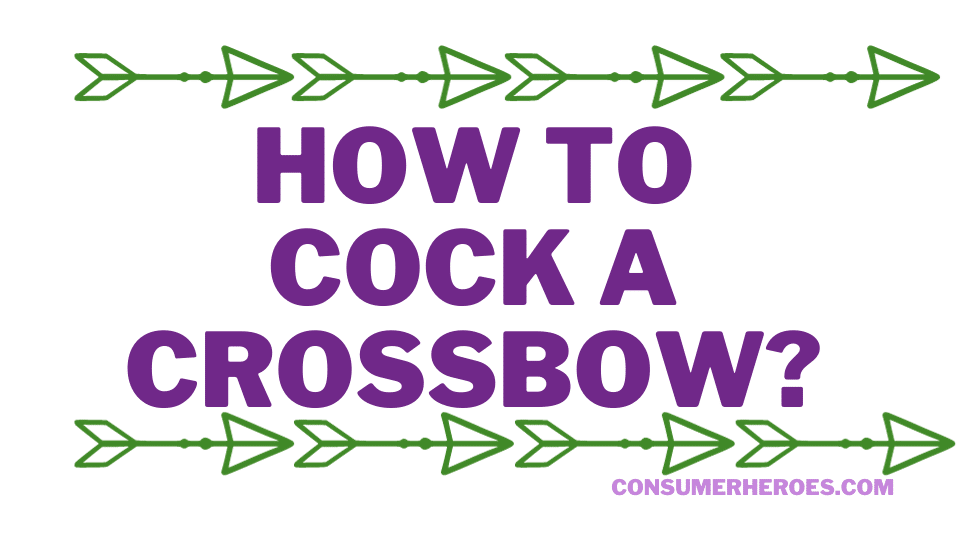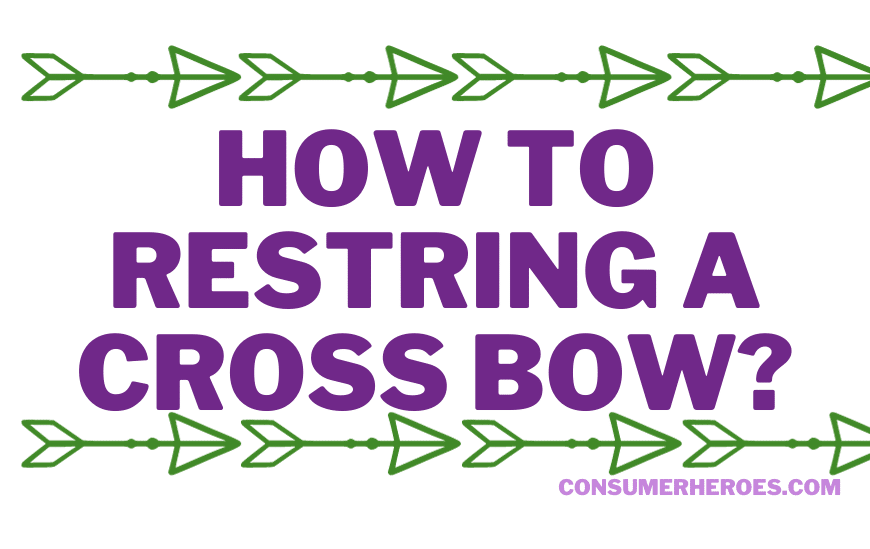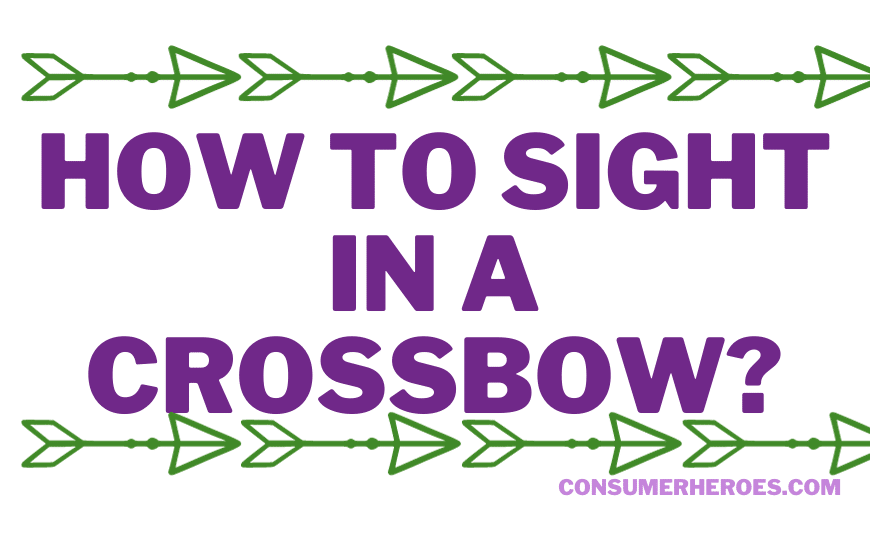A crossbow is a weapon that has been used for hunting and warfare for centuries. It is a type of bow that uses a horizontal limb assembly mounted on a stock to shoot projectiles, called bolts or quarrels. The crossbow works by using a combination of mechanical and elastic energy to propel the bolt forward.
The basic design of a crossbow consists of a stock, a bowstring, and a trigger mechanism. The stock is the main body of the crossbow, which is held against the shooter’s shoulder. The bowstring is attached to the limbs of the crossbow and is pulled back by the shooter to load the bolt. The trigger mechanism is used to release the bowstring and fire the bolt. When the bowstring is released, it snaps forward, and the stored elastic energy in the limbs is transferred to the bolt, propelling it forward at high speed.
What Is A Crossbow
A crossbow is a type of weapon that uses a horizontal bow-like assembly mounted on a stock to shoot arrows or bolts. It is similar to a traditional bow, but the crossbow is designed to be held and fired like a rifle. Crossbows have been used for hunting and warfare for centuries, and they are still used today for both purposes.
The basic components of a crossbow include the following:
- Stock: The main body of the crossbow that holds all of the other components together.
- Bow: The horizontal assembly that consists of two limbs, a string, and a trigger mechanism.
- Arrow or Bolt: The projectile that is fired from the crossbow.
- Quiver: A container that holds arrows or bolts for easy access.
- Sight: A device that helps the user aim the crossbow.
- Trigger: A mechanism that releases the string when pulled, firing the arrow or bolt.
Crossbows come in a variety of sizes and designs, from small handheld models to larger, more powerful ones that require a stand to shoot. They can also vary in terms of the amount of force required to draw the string back, which is measured in pounds. The more force required, the more powerful the crossbow will be.
Overall, a crossbow is a versatile and powerful weapon that can be used for hunting, target shooting, and even self-defense. Its unique design and features make it a popular choice for many people who enjoy outdoor activities and shooting sports.
Parts of A Crossbow
A crossbow is a weapon that uses a horizontal bow mounted on a stock to shoot projectiles called bolts. It is made up of several parts that work together to create a powerful and accurate weapon.
Stock
The stock is the main body of the crossbow and is used to hold all the other parts together. It is usually made of wood or synthetic materials and can come in different shapes and sizes depending on the manufacturer.
Bow
The bow is the part of the crossbow that provides the power to shoot the bolt. It is made up of two limbs that are attached to the stock and are held together by the string. The limbs can be made of different materials like wood, fiberglass, or carbon fiber.
String
The string is what connects the two limbs of the bow and is used to shoot the bolt. It is made of strong materials like Dacron or Kevlar and is usually coated with wax to protect it from wear and tear.
Trigger Mechanism
The trigger mechanism is the part of the crossbow that releases the string and shoots the bolt. It is made up of several parts like the trigger, sear, and latch and can be either mechanical or electronic.
Bolts
Bolts are the projectiles that are shot by the crossbow. They are similar in shape to arrows but are shorter and thicker. They are usually made of aluminum or carbon fiber and can have different types of tips like broadheads or field points.
In conclusion, a crossbow is a complex weapon that is made up of several parts that work together to create a powerful and accurate weapon. Understanding the different parts of a crossbow is essential for anyone who wants to use it safely and effectively.
The Physics Behind Crossbow Functioning
Potential and Kinetic Energy
A crossbow works by converting potential energy stored in the limbs into kinetic energy that propels the bolt forward. The limbs of a crossbow are made of a flexible material such as composite or wood, and they are bent back by a string that is drawn back by the user. As the string is pulled back, it stores potential energy in the limbs, which are under tension.
When the trigger is pulled, the tension in the limbs is released, and the potential energy is converted into kinetic energy. The limbs snap forward, and the string pushes the bolt out of the crossbow at high speed.
The Role of Tension
The amount of tension in the limbs of a crossbow is a key factor in determining the power and accuracy of the weapon. The more tension there is, the more potential energy is stored, and the faster and farther the bolt will travel.
However, there is a limit to how much tension can be applied to the limbs. If the tension is too great, the limbs may break or the crossbow may become difficult to handle. Therefore, crossbows are designed to have a maximum draw weight that is safe and effective for the user.
Release and Velocity
The release mechanism of a crossbow is also critical to its performance. The trigger must be designed to release the tension in the limbs quickly and smoothly, without causing any unnecessary movement or vibration.
The velocity of the bolt is determined by several factors, including the weight and shape of the bolt, the tension in the limbs, and the release mechanism. A heavier bolt will travel more slowly than a lighter one, but it may have more kinetic energy and therefore be more effective at penetrating armor or other barriers.
Overall, the physics behind a crossbow’s functioning are relatively simple, but they require careful design and engineering to ensure that the weapon is safe, accurate, and effective.
How To Load and Fire A Crossbow
Loading the Crossbow
Loading a crossbow can be a bit tricky, but with some practice, it can become easy and quick. The following steps should be taken to load a crossbow:
- Place the crossbow on a flat surface and secure it in place.
- Cock the crossbow by pulling the string back until it clicks into place.
- Place the arrow on the rail of the crossbow, with the nock end firmly seated against the string.
- Slide the arrow forward until it is snug against the trigger mechanism.
- Double-check that the arrow is securely in place, and then release the safety.
Aiming
Aiming a crossbow is similar to aiming a rifle. The following steps should be taken to aim a crossbow:
- Look down the length of the arrow to align the target with the sight.
- Adjust the sight as necessary to ensure the target is in focus.
- Steady the crossbow and take a deep breath.
- Hold your breath and squeeze the trigger.
Firing and Reload
Firing a crossbow is a simple process, but reloading can take some time. The following steps should be taken to fire and reload a crossbow:
- Squeeze the trigger to fire the arrow.
- Remove the used arrow from the crossbow.
- Place a new arrow on the rail, as described above.
- Cock the crossbow and release the safety.
- Aim and fire the crossbow again, as described above.
With some practice, loading, aiming, firing, and reloading a crossbow can become quick and easy.
Safety Measures When Using A Crossbow
When using a crossbow, safety should always be a top priority. Crossbows can be dangerous weapons if not handled properly. Here are some important safety measures to keep in mind when using a crossbow:
1. Always Wear Eye Protection
Wearing eye protection is essential when using a crossbow. The bowstring can snap and cause serious eye injuries if it comes into contact with the eye. It is recommended to wear safety glasses or goggles that meet ANSI Z87.1 standards.
2. Keep Your Fingers Away from the Trigger
When loading or unloading a crossbow, it is important to keep your fingers away from the trigger. Accidental firing can occur if the trigger is pulled while the crossbow is being loaded or unloaded. Always keep your fingers away from the trigger until you are ready to fire.
3. Check Your Equipment
Before using a crossbow, it is important to check all equipment for damage or wear. Make sure the bowstring is not frayed or damaged, and check the limbs and bolts for cracks or other damage. Also, ensure that the arrows are the correct length and weight for your crossbow.
4. Never Dry Fire a Crossbow
Dry firing a crossbow (firing it without an arrow) can cause serious damage to the bow. The energy from the bowstring is not transferred to the arrow, causing the bow to absorb all of the energy. This can cause the bow to break or become damaged, and can also cause injury to the shooter.
5. Always Point the Crossbow in a Safe Direction
When handling a crossbow, always point it in a safe direction. Never point it at anything you do not intend to shoot, and never point it at people or animals. Always be aware of your surroundings and make sure there is a safe backstop behind your target.
By following these safety measures, you can reduce the risk of injury when using a crossbow. Always remember to use common sense and caution when handling any weapon.
Maintenance and Care of A Crossbow
Proper maintenance and care of a crossbow are essential to ensure its longevity and optimal performance. Here are a few tips to keep your crossbow in top shape:
1. Keep it Clean
After each use, it’s important to clean your crossbow thoroughly. Use a soft cloth to wipe down the limbs, rail, and string. Make sure to remove any dirt, debris, or moisture that may have accumulated during use. A dirty crossbow can affect accuracy and cause premature wear and tear.
2. Wax the String
Regular waxing of the string is essential to prevent fraying and prolong its lifespan. Apply a small amount of wax to the string every 50 to 75 shots or after each use in wet conditions. Avoid over-waxing, as this can attract dirt and debris.
3. Check the Bolts
Before each use, inspect the bolts for any signs of damage or wear. Check for bent or warped bolts, loose fletching, or damaged nocks. Replace any damaged bolts immediately to prevent injury or damage to the crossbow.
4. Store Properly
When not in use, store your crossbow in a dry, cool place away from direct sunlight and heat sources. Use a case or cover to protect it from dust, dirt, and moisture. Avoid storing it in a damp or humid environment, as this can cause rust and corrosion.
5. Follow Manufacturer’s Guidelines
Always follow the manufacturer’s guidelines for maintenance and care of your specific crossbow model. This may include specific waxing instructions, recommended bolt types, or other maintenance tips. Failure to follow these guidelines can void your warranty and cause damage to your crossbow.
Conclusion
In conclusion, a crossbow is a powerful weapon that uses a combination of mechanical energy and physics to launch a projectile with accuracy and speed. The design of the crossbow has evolved over centuries, from the simple handheld bows of ancient times to the more complex and sophisticated models of today.
The main components of a crossbow are the bow, prod, trigger mechanism, and stock. The bow or prod stores the energy that is used to launch the bolt, while the trigger mechanism releases the stored energy when the trigger is pulled. The stock provides a stable platform for the shooter to aim and fire the crossbow.
The accuracy and range of a crossbow depend on several factors, including the draw weight, bolt weight, and length of the bow or prod. A heavier draw weight and longer bow or prod will result in a more powerful shot, while a lighter draw weight and shorter bow or prod will result in a less powerful shot.
Crossbows are used for a variety of purposes, including hunting, target shooting, and military applications. They are popular among hunters who want a silent and powerful weapon for taking down game, and they are also used by military and law enforcement personnel for tactical operations.
Overall, the crossbow is a versatile and effective weapon that has stood the test of time. With its simple yet efficient design, it continues to be a popular choice for hunters, shooters, and enthusiasts around the world.







